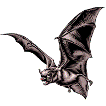Museum, University of Nebraska State

University of Nebraska State Museum: Mammalogy Papers
Document Type
Article
Date of this Version
2008
Abstract
Bite force was quantified for 13 species of North American rodents using a piezo-resistive sensor. Most of the species measured (11) formed a tight relationship between body mass and bite force (log 10(bite force) = 0.43(log 10(body mass)) + 0.416; R2 > 0.98). This high correlation exists despite the ecological (omnivores, grazers and more carnivorous) and taxonomic (Cricetidae, Heteromyidae, Sciuridae and Zapodidae) diversity of species. Two additional species, Geomys bursarius (Geomyidae) and a Sciurus niger (Sciuridae), bit much harder for their size. We found a simple index of strength based on two measurements of the incisor at the level of the alveolus (Zi = ((anterior-posterior length)2 × (medial-lateral width))/6) that is highly predictive of bite force in these rodents (R2 > 0.96). Zi may be useful for prediction of bite force (log10 (Bite Force) = 0.566 log10 (Zi) + 1.432) when direct measurements are not available.


Comments
Published in Journal of Zoology 275:4 (2008), pp. 418–422; doi 10.1111/j.1469-7998.2008.00459.x Copyright © 2008 Patricia W. Freeman & Cliff A. Lemen; journal compilation copyright © 2008 The Zoological Society of London. Used by permission. http://www.interscience.wiley.com/jpages/0952-8369